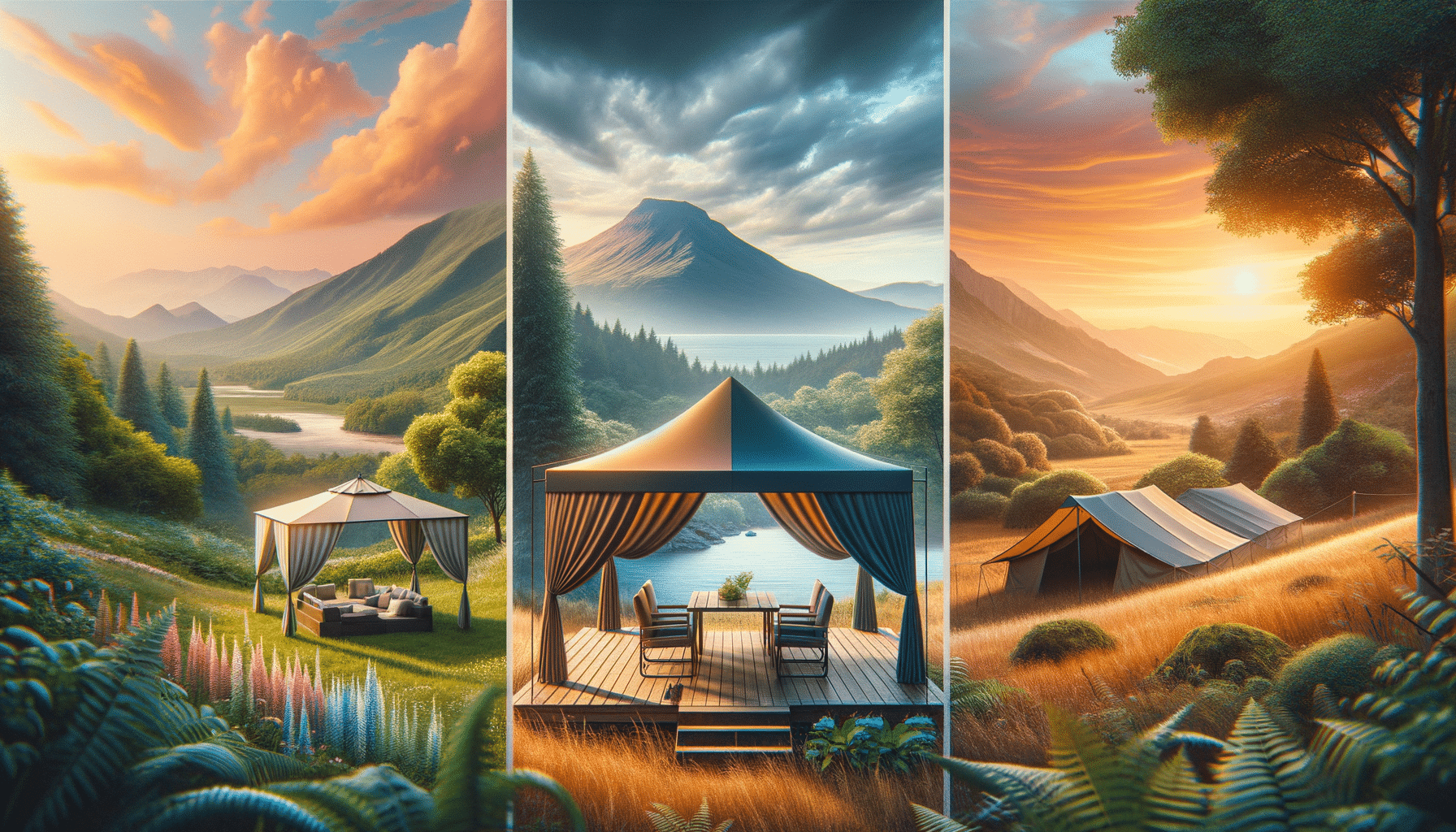Exploring the Versatile World of Canopies: Shelter, Style, and Functionality
Canopies are versatile structures that provide shelter, style, and functionality for various occasions and settings.

Introduction to Canopies
Canopies are a staple in both residential and commercial settings, offering a blend of practicality and aesthetic appeal. These structures, which range from simple fabric coverings to elaborate architectural designs, serve a multitude of purposes. Whether providing shade at a backyard barbecue or acting as a stylish entrance to a building, canopies are integral to modern living. Their importance is underscored by their ability to enhance outdoor spaces, protect against the elements, and contribute to the visual appeal of an area.
Types of Canopies
Canopies come in various forms, each designed to meet specific needs and preferences. Here are some common types:
- **Pop-up Canopies**: Easily portable and perfect for temporary use at events like fairs and markets.
- **Shade Canopies**: Designed primarily to protect against the sun, often used in gardens and patios.
- **Event Canopies**: Larger structures used for weddings, parties, and corporate events.
- **Entrance Canopies**: Installed at building entrances to provide shelter and enhance aesthetics.
- **Car Canopies**: Protect vehicles from weather conditions such as rain and sun.
Each type of canopy is tailored to specific uses, offering different levels of durability, portability, and weather resistance. For instance, pop-up canopies are lightweight and easy to assemble, making them ideal for temporary events. In contrast, entrance canopies are often more permanent installations, designed to withstand various weather conditions while adding architectural interest to a building.
Materials Used in Canopy Construction
The materials used in canopy construction significantly influence their functionality and durability. Common materials include:
- **Fabric**: Often used for temporary canopies, offering flexibility and ease of use.
- **Metal**: Provides strength and durability, commonly used in permanent structures.
- **Polycarbonate**: Lightweight and resistant to impact, ideal for both temporary and permanent canopies.
Fabric canopies, typically made from polyester or canvas, are popular for their lightweight nature and ease of setup. However, they may not be as durable in harsh weather conditions. Metal canopies, often constructed from aluminum or steel, offer greater durability and are well-suited for long-term installations. Polycarbonate canopies strike a balance between the two, offering a lightweight yet sturdy option that is resistant to UV rays and weather damage.
Benefits of Using Canopies
Canopies offer a wide range of benefits that make them a valuable addition to any outdoor space:
- **Protection from Elements**: Shield from sun, rain, and wind, enhancing comfort in outdoor areas.
- **Versatility**: Suitable for various settings, from residential gardens to commercial venues.
- **Aesthetic Appeal**: Enhance the visual appeal of a space, often serving as a focal point.
- **Cost-Effective**: Provide a budget-friendly solution for extending outdoor living spaces.
By providing protection from the elements, canopies allow individuals to enjoy outdoor spaces more comfortably and for longer periods. Their versatility means they can be adapted to suit different environments and purposes, making them a practical choice for both personal and professional use. Additionally, canopies can significantly enhance the aesthetic appeal of a space, offering a stylish and functional solution to outdoor design challenges.
Choosing the Right Canopy for Your Needs
Selecting the right canopy involves considering various factors to ensure it meets your specific needs:
- **Purpose**: Determine the primary use of the canopy, whether for shade, shelter, or decoration.
- **Location**: Consider the environment where the canopy will be placed, including weather conditions and space availability.
- **Budget**: Evaluate the cost-effectiveness of different canopy options and materials.
- **Durability**: Assess the longevity and maintenance requirements of the canopy materials.
Understanding the primary purpose of the canopy is crucial in choosing the right type. For instance, if the canopy is intended for frequent relocation, a lightweight and portable option like a pop-up canopy would be ideal. Conversely, for a more permanent installation, a metal or polycarbonate canopy might be more suitable. Additionally, considering the local climate and typical weather patterns can guide the selection of materials that will withstand environmental challenges. Budget considerations also play a significant role, as more durable materials may come with a higher upfront cost but offer long-term savings through reduced maintenance and replacement expenses.
Conclusion
In conclusion, canopies are versatile and valuable structures that offer a range of benefits, from providing shelter and enhancing aesthetics to being cost-effective solutions for outdoor spaces. Their adaptability to different environments and purposes makes them an essential component of modern outdoor design. By carefully considering factors such as purpose, location, budget, and durability, individuals can select the ideal canopy to meet their specific needs and enhance their outdoor living experience.